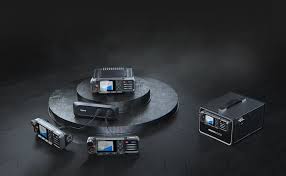
Retailers are constantly searching for ways to enhance efficiency and reduce operational expenses in an increasingly competitive landscape. One technology that has proven transformative is RFID technology, offering powerful tools for inventory management, theft prevention, and streamlined operations. By using RFID, retailers can save both time and money while delivering better customer experiences. Here are five practical ways RFID technology is reshaping retail and driving cost savings.
1. Automated Inventory Management
Traditional inventory management can be time-consuming and prone to human error. RFID technology automates this process by providing real-time visibility into stock levels. Retailers can scan hundreds of items in seconds, ensuring accurate inventory counts and reducing the time employees spend on manual tasks. According to recent industry data, RFID adoption in retail has led to inventory accuracy rates as high as 98%. This accuracy minimizes overstocking and stockouts, translating to significant cost savings.
2. Improved Loss Prevention
Shrinkage from theft or misplaced items is a persistent problem for retailers. RFID tags embedded in products allow retailers to track their movement in-store and throughout the supply chain. This transparency reduces opportunities for theft and makes it easier to recover misplaced inventory. For example, North American retailers have reported a 15% drop in shrinkage rates after adopting RFID technology.
3. Enhanced Employee Productivity
RFID technology streamlines operations, allowing employees to focus on more customer-facing tasks. For instance, RFID-enabled systems can quickly identify when stock needs replenishment on shelves, eliminating the need for workers to perform constant manual checks. With fewer hours spent on repetitive tasks, employees can dedicate more time to improving the overall shopping experience, which further drives sales and customer loyalty.
4. Faster Checkout Processes
Long checkout lines can deter customers and hurt sales. RFID technology simplifies the checkout process by enabling contactless transactions. When products with RFID tags are scanned simultaneously, it drastically reduces wait times. This not only enhances the customer experience but also reduces the labor hours required to staff traditional checkout lanes. Many RFID-enabled stores have reported a 30% increase in checkout efficiency, boosting both customer satisfaction and operational efficiency.
5. Optimized Supply Chain Operations
RFID technology provides end-to-end visibility across the supply chain, enabling retailers to track shipments in real-time. This transparency helps businesses identify bottlenecks, avoid delays, and ensure that products arrive on time. By improving supply chain efficiency, retailers reduce costs associated with expedited shipping and inventory holding. Retailers in the Asia-Pacific region, for instance, are using RFID to achieve faster turnaround times, helping them keep pace with the region’s booming e-commerce growth.
RFID technology is not just a tool; it’s a game-changer for retailers looking to save time and cut costs while delivering exceptional customer experiences. From automating inventory management to optimizing supply chain operations, the benefits are clear. By embracing RFID, retailers can future-proof their operations and stay ahead in an increasingly dynamic market.





